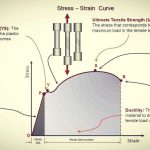✨ Introduction
Have you ever watched a kite soaring high in the sky and wondered what exactly keeps it up there? 🪁💭 It’s not magic—it’s science! The key forces at play are lift and drag, which are fundamental concepts in the study of aerodynamics. Understanding these forces gives us insight not only into how kites fly but also how airplanes stay airborne and how birds glide gracefully through the air. 🐦✈️
In this article, we’ll unravel the mechanics behind kite flight and explore how the interaction between wind, the kite’s shape, and string tension all contribute to a successful flight. 🌬️📐
🌬️ The Role of Wind in Kite Flight
Wind is the engine that powers a kite’s flight. Without it, your kite would simply flop to the ground. Wind provides the energy that creates two crucial aerodynamic forces: lift and drag. Here’s how they work:
-
Lift is the upward force that counters gravity.
-
Drag is the resistance force that acts opposite to the direction of motion.
For a kite to rise and stay in the air, lift must be greater than the weight of the kite, and the drag must be managed effectively.
🎓 Understanding Lift
Lift is the primary force that allows a kite to rise into the sky. It is created by the movement of air over and under the kite’s surface. ✈️🪁
How Does Lift Work?
The shape of a kite, particularly the angle at which it meets the wind (called the angle of attack), determines how air flows around it. When air flows faster over the top of the kite and slower underneath, a pressure difference is created, and the kite is pushed upwards. This is known as Bernoulli’s Principle, which also explains how airplane wings generate lift.
Key Factors That Influence Lift:
-
Wind Speed: Stronger winds generate more lift.
-
Kite Shape: Curved or bowed kites are better at producing lift.
-
Angle of Attack: A steeper angle increases lift—up to a point. Too steep, and the kite may stall.
🧲 What is Drag?
While lift helps the kite ascend, drag works against it. Drag is the force that resists motion through the air. 🪁💨
Types of Drag:
-
Parasitic Drag: Caused by the kite’s structure as it moves through the air.
-
Induced Drag: Comes as a consequence of lift. As lift increases, so does induced drag.
While drag might sound like a bad thing, it actually helps stabilize the kite. Too little drag and the kite becomes uncontrollable; too much and it can’t rise. Balance is key!
🎯 The Tether: The Unsung Hero
The string or tether of a kite might seem like just a tool to hold onto, but it’s essential for controlling lift and drag. When you adjust the string’s length and angle, you influence the kite’s orientation to the wind, affecting its angle of attack and thereby the amount of lift it generates.
The tension in the string also helps maintain stability and prevents the kite from flipping over or spiraling out of control.
⚖️ The Perfect Balance: Achieving Stable Flight
Flying a kite successfully is all about balancing four key forces:
-
Lift (upward)
-
Weight (downward)
-
Thrust (forward motion, provided by the wind)
-
Drag (backward resistance)
When these forces are balanced correctly, the kite soars smoothly. Too much weight or drag and it will struggle. Too much lift and it could rise too quickly and crash.
🧪 Experimenting with Kite Design
Different kite shapes affect how lift and drag interact:
-
Delta Kites: Great for light winds and easy to fly.
-
Box Kites: Generate a lot of lift and work well in strong winds.
-
Parafoil Kites: No frame, rely entirely on air pressure to hold shape.
-
Diamond Kites: Classic design, a good balance of lift and drag.
Trying out various designs is a great way to see aerodynamics in action! ✂️🧵🪁
🧠 Fun Facts About Kite Flying
-
The earliest kites were invented in China over 2,000 years ago! 🇨🇳
-
The Wright brothers used kites in their experiments leading up to their first airplane flight. 🛩️
-
NASA has studied kite dynamics to better understand flight mechanics and even for alternative energy projects! 🚀
🎉 Conclusion
Kite flying is a joyful activity that beautifully demonstrates the principles of physics and aerodynamics. 🧑🔬💨 Whether you’re a casual flyer or a science enthusiast, knowing how lift and drag work gives a deeper appreciation for the wonders of flight.
Next time you launch a kite into the sky, remember—you’re not just playing; you’re experimenting with the very forces that keep airplanes, birds, and rockets in motion! 🚀🪁


